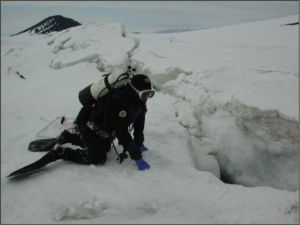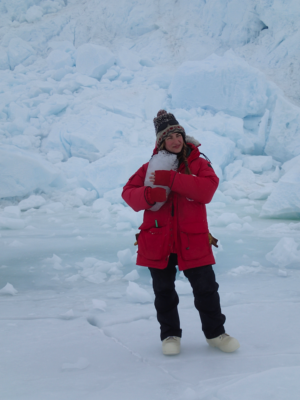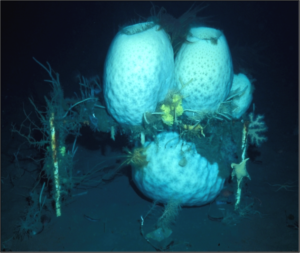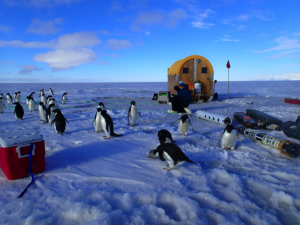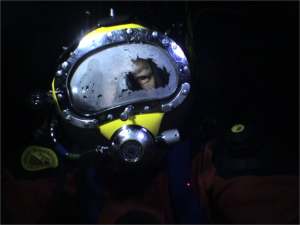By John Oliver and Stacy Kim (25 January 2016)
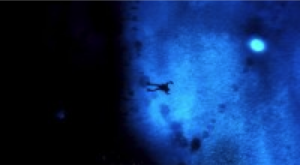
John Oliver: The MLML Antarctic programs started in 1974, when Paul Dayton at SIO (Scripps Institution of Oceanography) invited me to join his benthic research group at McMurdo Station. I had a great advantage over all my peers, because I was two people. Pete Slattery and I have been partners since 1970, and he worked on every research project I ever did. After working with Dan Watson and Crazy Ed O’Connor, Paul wanted more MLML folk. Unless indicated otherwise, everyone I mention was a student or staff at MLML. Pete Slattery, Jim Barry, Larry Hulberg, Don Canestro, John Boland (SIO) and my first wife Donna went to the ice with Paul, and Jim Barry became one of Paul’s students. Donna did her PhD on the effects of isolation in the Antarctic winter. Dan, Larry, and later Steve Laslie became the NSF Biolab Managers at McMurdo Station, and Ed Osada helped Art Devries capture Antarctic cod.
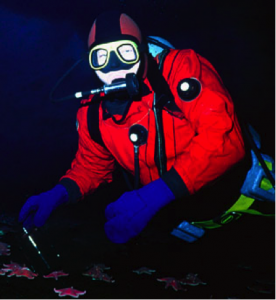
In 1982, Pete, Jim Oakden and I became life-long partners in the Benthic Lab and in 1983 Rikk Kvitek, Mark Silberstein and I returned to the ice in my first visit without Paul. In 1988, Pete and I returned with Stacy Kim and Jim Oakden and started a program that lasted into the mid 90’s, comparing benthic community responses to natural and anthropogenic disturbances. Later Hunter Lenihan managed this program, while Stacy was at Woods Hole. Brenda Konar, Dan Bockus, Jo Guerrero, Kirsten Carlson, Carrie Bretz, Diane Carney, and Ian Tamblyn (Canadian artist) were on and under the ice. And then Linda Kuhnz, Dan Malone, and Kamille Hammerstrom our lab managers followed and we’re into the Stacy Kim epoch. Before that, Rikk Kvitek and Kathy Conlan (Canadian Museum) and then Hunter Lenihan and Pete Peterson (UNC) got NSF grants to explore the pollution gradient at McMurdo Station, and wonderfully involved the Benthic Lab. All of this and much more happened because Paul Dayton provided the portal and discovered the gold mine of human resources at MLML. I’ve been digging in that mine for 45 years!
Stacy Kim: In 1988 I was a graduate student in the Benthic Lab, working with John Oliver. One day, out of the blue, he said, “Would you like to go to Antarctica?” It took me no time to say yes. We were to leave shortly, as NSF was under pressure from Greenpeace to do something about the contamination from the largest US base in Antarctica, McMurdo Station. Oliver was an expert on the seafloor communities in McMurdo Sound, having completed his thesis on the topic working with Paul Dayton at Scripps (link to paper).
Oliver and John Heine worked with me to prepare for diving under a fast ice ceiling. But the ancient gear they were still using for Antarctic diving – double hose regulators – simply was not to be found in working condition in the US. So I had theoretical knowledge, but no practical training with the equipment. Fortunately, working with Oliver had given me plenty of drysuit diving experience in the Arctic, and he talked me through use of the old regs many times (as those of you who know him might be able to imagine).
Not surprisingly, I was THRILLED to get under the ice for the first time. But it was awfully hard to breathe, and after just a few minutes I signaled to Oliver I was having trouble and we ended the dive. He rolled his eyes but tested my regulator once we were back the surface and confirmed that it was not supposed to be THAT hard to breathe – it wasn’t just my unfamiliarity with the equipment – I had a faulty regulator! But what I remembered most was the feeling of flying – the visibility of 1000 ft let you see the bathymetry all around and get an overview of the distribution of animals and relationships to physical structure that we don’t get anywhere else. I was already hooked.
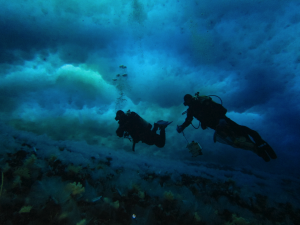
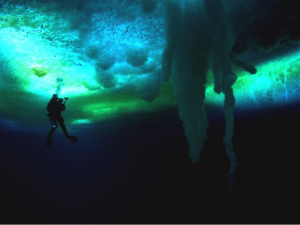
We found a typically Oliverian (i.e. John Oliver) solution to the gear problems, and went on to map the extent of the seafloor contamination around McMurdo Station in that brief trip (link to paper). I graduated from MLML and went off and got a PhD doing deep sea research. But the Antarctic - and the unique scientific questions that can be addressed there because of its isolation - stayed in my mind.
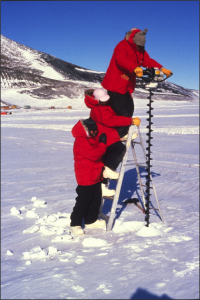
By 1996 I had returned to MLML as an adjunct researcher, and from 1997 to 2004 worked on several projects to examine the variable and compounding impacts of different types of contamination and disturbance on Antarctic seafloor communities. Working with Hunter Lenihan, another MLML graduate, we established that organic contamination enhances polychaete populations, while chemical contamination decimates crustaceans (link to paper). On my first ever NSF grant we determined that recovery from organic contamination was occurring more rapidly than predicted, and that recovery from sediment disturbance was even more rapid, both surprising in an ecosystem where slow rates were the paradigm (, link to paper). Andrew Thurber became my first Antarctic graduate student, went on to get a PhD at Scripps and is now a professor at OSU (Oregon State University).
But diving can only get you so far. Most of the Antarctic seafloor remains completely unknown; it is too deep for divers and the ice prevents normal ship and ROV operations. The solution was to build our own ROV, specifically to work through ice, and SCINI was born (link to web page, link to paper). This primarily engineering project led to mapping of several previously unexplored areas, and provided data for MLML graduate students Clint Collins (recently defended!) and Dorota Szuta.
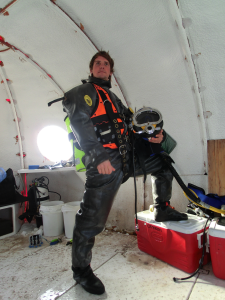
With Paul Dayton, we used SCINI to reach study sites he had set up before sensible rules on diving depth limitations were in place, and which consequently, were no longer accessible to divers (link to web page). Despite Oliver’s sudden departure due to kidney stones (and I thought he was faking it to get out of doing Happy Camper Survival School again), we learned that hexactinellid sponges, one of the foundation Antarctic species, grow far faster than previously recorded – though the growth is highly episodic (link to paper).
Most recently, we have been working on a food web study to examine the relative controls of primary production and top predator populations on community structure (link to web page). We developed and built FATTI to accompany SCINI, and give her sonar and fluorometry capabilities. Analysis is ongoing, but we are finding that the top predators have a much larger impact in this ecosystem than expected from other ecosystem studies, where humans are a more prevalent factor.
Our continuing work uses Antarctica as a test bed for extra-planetary missions. While working out the engineering bugs, we also have the opportunity to explore under ice shelves, areas of our planet that are previously unvisited. Stunning discoveries of life several hundred kilometers from their normal food source raise yet more mysteries (link to article) that will keep us busy for years to come!


